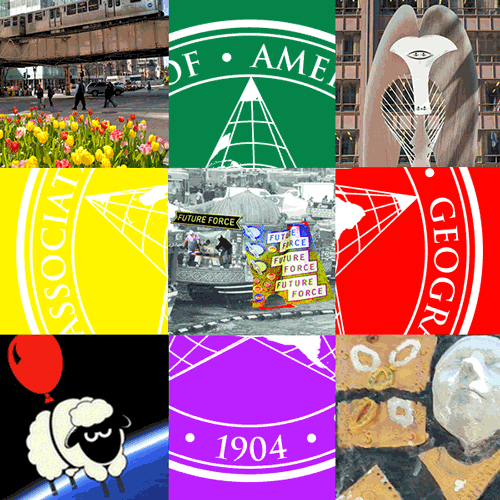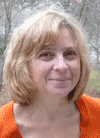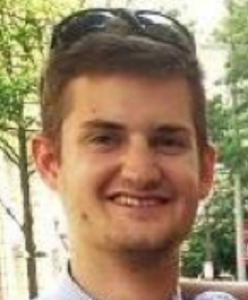Chiao-Min Hsieh, emeritus professor of geography at the University of Pittsburgh, passed away on February 26, 2015, at the age of 96.
Hsieh was born in Shaoxing, Zhejiang province, China. As the youngest child with three considerably older siblings, he was somewhat mollycoddled by his mother. His move in 1931 to Chenghui High School, a boarding school, came as something of a shock with its rigid discipline and lack of special favors.
The school emphasized three areas – academics, behavior, and athletics – and Hsieh confessed that of these he excelled only at athletics! Yet the pressure was on as his siblings had gone on to achieve respectable careers – his eldest brother a university professor, his middle brother a businessman, and his sister a teacher married to a college professor.
It was the death of his mother during his early years at high school that shook Hsieh out of his childhood innocence and academic reluctance. In 1937 he graduated at the top of his class and sat the week-long entrance exams for the country’s top universities. Before the examinations started, candidates had to rank their top choices and the field in which they wanted to study. Zhejiang University, founded in 1897 and one of the oldest universities in the country, was Hsieh’s first choice, next to which he wrote “Geography.”
Hsieh passed the tests and was accepted into the Department of History and Geography. In September 1937, he travelled the 100 miles from his home city to Hangzhou to enroll at Zhejiang University. He found the classes intense and the material new; it was hard work but he was excited to be learning in this environment which was quite different from high school. Hsieh and his fellow students studied into the night by the light of burning incense sticks until one of their professors invented a covered oil wick lamp that gave better illumination.
Among their professors were some who were Western-educated, at the time something that was highly respected. They encouraged a different mode of learning focused on free thinking and problem solving, and had a different relationship with their students, joking with them at times. Physical education was compulsory but Hsieh was already a keen athlete and particularly enjoyed basketball.
Hsieh enjoyed the privileged life of being a student living on a beautiful campus, but this idyllic time was soon interrupted. The Japanese had invaded China a few months previously. After conquering Beijing in July 1937, the army marched southeastwards, along the way bombing towns, burning farms, destroying factories, and torturing civilians. By August, Shanghai had fallen and Hangzhou was next in line.
Among other things, the Japanese were trying to obliterate Chinese culture so schools, colleges, universities and libraries were particular targets. The administration of Zhejiang University decided that the students should be evacuated inland to a safer place. This was to start with the 200 freshmen who were just a month or so into their first semester. Hsieh and his fellow students were moved to Chanyang Temple at Tianmu Mountain. In this idyllic spot, and living among the resident monks, their lessons continued during the week, while weekends were spent exploring the mountains.
In November, Japanese troops landed in Hangzhou Bay and the city came under aerial bombardment. People started to evacuate in greater numbers. Many of the university students, angered by the invasion, began military training, learning different maneuvers and gun handling skills. But it was the university’s Harvard-educated Chancellor, Dr Zhu, who persuaded the students that there were multiple roles in a war and that theirs was to protect the culture and history of China; their duty as scholars was to be the keepers of books.
The decision was made to move Zhejiang University inland to a small city called Jiande. Hsieh was among the 300 freshmen, staff and their families who travelled down from Chanyang Temple to Jiande – girls and families in cars, boys and men on foot. When the Japanese later reached Chanyang Temple, they completely destroyed it. Meanwhile, those still at the main campus in Hangzhou packed up and moved by car and boat, in an operation that took a week.
Jiande was only a small city and the university used temples, homes and schools as residence halls, offices and classrooms. Although all were in fear of Japanese bombardment, the university never considered shutting down. And this story was to continue for the next 8 years. Forced to keep on relocating – from Jiande to Ji’an then Taihe in Jiangxi province, through Hunan province to Yishan in Guangxi province, and finally to Zunyi in Guizhou province – the 800 students, faculty and their families covered more than 1,000 miles, largely on foot.
They faced constant fear and worry due to the threat of enemy air strikes, as well as hunger and malnutrition, disease and exhaustion. Yet all the time the university was still operating, setting up temporary dormitories, classrooms, laboratories and libraries in the succession of towns where they sought refuge from the war.
And with them they carried more than 700 boxes and sacks containing the university’s 50,000 library books, 30,000 pieces of equipment, over 700 machines, and 12,000 biological and geological specimens. In addition, they were also entrusted with the safekeeping of a copy of Wenlan Ge, one of China’s greatest library treasures consisting of over 70,000 volumes of priceless cultural works, some dating back thousands of years, which was packed into 139 boxes.
For Hsieh the travelling was eye-opening. He had spent all of his life in Zhejiang, one of China’s smallest provinces, surrounded by Han Chinese. Moving inland, he met people from minority ethnic groups, heard them speaking differently, saw different customs and costumes, and found out about different religious beliefs. He was fascinated by other traditions that were very different from his own cultural norms.
His geographer’s imagination was also blown away by the physical landscape. Seeing the karst landforms in Guangxi region, and having the chance to explore them on day trips, was a real thrill, although once, while wandering about alone with a textbook and map, he was stopped by a policeman who thought he was a spy!
In 1941 Hsieh took the final exams and graduated. He then moved to the Institute of Geography, a research center in the town of Beipei near Chongqing, Sichuan province. Although this time was intellectually interesting, it was socially restrictive as the area was so remote. However, one Sunday in the town’s bookstore he met some former classmates from Zhejiang University. Among them was Jean Kan, who had joined the Department of History and Geography in 1940, and he was rather attracted to her. Jean had graduated in 1944 and was teaching at a high school several hours travel from Beipei so they corresponded by letter and saw each other occasionally.
At the end of the Sino-Japanese War in 1945, Hsieh and many others were keen to leave the interior and return to their homes in eastern China. Meanwhile Taiwan, which had been a Japanese colony, had now reverted back to China and scholars were needed to assist with the transition of the education system from the Japanese system to the Chinese model. Hsieh’s older brother became a founding member of Taiwan Normal University and Hsieh was invited to become a lecturer in geography. In 1947, he asked Jean to marry him and she took up a position as a high school teacher near Taipei.
While life in Taiwan was pleasant, Hsieh was interested in studying abroad. He sat an open examination for the Chinese National Scholarship and, scoring the second highest marks, was selected to study human geography in America. His former university teacher, Chancellor Zhu, recommended him to an old friend, Professor Cressey at Syracuse University. Hsieh left China in December 1947 on a boat bound for America to begin his graduate studies. Jean joined him a year later and studied for a master’s degree in geography also at Syracuse.
Hsieh received his PhD in 1953. At this tumultuous point in history, he was unable to return to China; however, neither was it easy for foreigners to obtain teaching positions at American universities. Through recommendations, Hsieh was offered a teaching position at Dartmouth College followed by a research associate position at the Massachusetts Institute of Technology. He subsequently taught at the University of Leeds in England and then at the Catholic University of America in Washington, D.C. for 10 years. In 1968 he settled in a permanent professorial post at the University of Pittsburgh where he remained for the next 30 years.
The focus of his academic work was the Far East. Among his publications were China: Ageless Land and Countless People (1967), Taiwan Ilha Formosa: a Geography in Perspective (1964), Atlas of China (1973), Changing China: a Geographic Appraisal (with Max Lu) (2003), and China, a Provincial Atlas (with Jean Kan Hsieh) (1995).
He was a Fulbright Research Fellow three times, and a Senior Fellow of National Endowment for the Humanities, as well as an honorary visiting professor at Peking University, and an advisory professor at Zhejiang University.
After retiring in 1992, Hsieh continued to publish geography books and to lecture at universities in the Far East including Hong Kong University, National Taiwan Normal University, the Chinese Culture University, and his alma mater, Zhejiang University. He was also awarded a grant for Geography and Cartography by the Rockefeller Foundation in 2002.
His last book, Race the Rising Sun: A Chinese University’s Exodus during the Second World War (2009) was a personal account, co-authored with his wife, which told the story of Zhejiang University’s evacuation and long trek during the Sino-Japanese War.
Hsieh’s enthusiasm for basketball from his student days continued throughout his life and he became a keen follower of the University of Pittsburgh team. He was also a passionate Chinese chess (xiangqi) player.
Jimmy was predeceased by Jean, his loving wife of 65 years, who passed away in 2012. He is survived by their two children, daughter, Eileen Hsieh, and son, An-Ping Hsieh, and their families including five grandchildren whom he loved very much: Brian, Andrew and Kyra Tomenga, and Jessica and Alexander Hsieh.
For a full account of Jimmy and Jean’s student years in the context of the university’s evacuation from Hangzhou and displacement in the interior during the Sino-Japanese War, see their excellent autobiographical book, Race the Rising Sun: A Chinese University’s Exodus during the Second World War (Hamilton Books, 2009).






 CAMP AAG, the AAG’s new onsite childcare program, is now accepting advance registrations for the 2015 Annual Meeting. The Association has selected Accent on Children’s Arrangements, Inc. (ACCENT) to design and run the new children’s program and to provide full-time, professionally managed and staffed childcare at the Hyatt Regency Hotel in Chicago from April 21-25, 2015.
CAMP AAG, the AAG’s new onsite childcare program, is now accepting advance registrations for the 2015 Annual Meeting. The Association has selected Accent on Children’s Arrangements, Inc. (ACCENT) to design and run the new children’s program and to provide full-time, professionally managed and staffed childcare at the Hyatt Regency Hotel in Chicago from April 21-25, 2015. 
 Joe Chestnut Interns at AAG for Winter Semester
Joe Chestnut Interns at AAG for Winter Semester